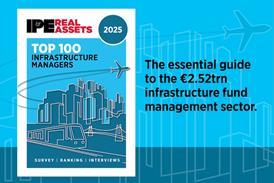The second quarter of 2011 (Q2) marked a continued period of general stability in values across the European commercial property market. While positive (+0.1%), the rate of growth was much slower than seen in the previous two quarters (at +0.4%, and +1.2% respectively), according to the latest European Valuation Monitor (EVM) published by CB Richard Ellis.
The second quarter of 2011 (Q2) marked a continued period of general stability in values across the European commercial property market. While positive (+0.1%), the rate of growth was much slower than seen in the previous two quarters (at +0.4%, and +1.2% respectively), according to the latest European Valuation Monitor (EVM) published by CB Richard Ellis.
Over recent quarters the retail sector has seen the strongest performance, and this trend continued - retail property was the only sector to see positive value change (+0.8%) in Q2, adding to a year-on-year rise of 3.5%. While year-on-year change is still positive for the office sector (+2.0%), values fell quarter-on-quarter by 0.2%, while values in the industrial sector are now falling year-on-year (- 0.9% or -0.6 quarter-on-quarter).
'Values remained almost unchanged across Europe over the second quarter of 2011,' said Andrew Barber, senior director of EMEA Valuation and Advisory Services at CBRE. 'The absence of any strong general movement in either rents or yields last quarter, and economic uncertainty caused by the deteriorating news on Greece and other peripheral economies, saw a divergence in property value performance across both sectors and regions.'
Values fell in Southern Europe and Ireland, but it was the Netherlands which saw the greatest decline - reflective of the widening value gap between prime and secondary assets that has emerged there. As more evidence becomes available there may be more weakening in the secondary/tertiary markets. However, it is notable that investors continue to compete strongly for core assets that have recently come to the market.
Economic momentum remains very uneven and, with fiscal strains within the Eurozone continuing to loom large, investor concerns persist, but a clearer pattern of change is emerging with the stronger economic areas such as the Nordic markets, UK and CEE still seeing positive value change.










